HSBC 2008 Annual Report Download - page 193
Download and view the complete annual report
Please find page 193 of the 2008 HSBC annual report below. You can navigate through the pages in the report by either clicking on the pages listed below, or by using the keyword search tool below to find specific information within the annual report.-
 1
1 -
 2
2 -
 3
3 -
 4
4 -
 5
5 -
 6
6 -
 7
7 -
 8
8 -
 9
9 -
 10
10 -
 11
11 -
 12
12 -
 13
13 -
 14
14 -
 15
15 -
 16
16 -
 17
17 -
 18
18 -
 19
19 -
 20
20 -
 21
21 -
 22
22 -
 23
23 -
 24
24 -
 25
25 -
 26
26 -
 27
27 -
 28
28 -
 29
29 -
 30
30 -
 31
31 -
 32
32 -
 33
33 -
 34
34 -
 35
35 -
 36
36 -
 37
37 -
 38
38 -
 39
39 -
 40
40 -
 41
41 -
 42
42 -
 43
43 -
 44
44 -
 45
45 -
 46
46 -
 47
47 -
 48
48 -
 49
49 -
 50
50 -
 51
51 -
 52
52 -
 53
53 -
 54
54 -
 55
55 -
 56
56 -
 57
57 -
 58
58 -
 59
59 -
 60
60 -
 61
61 -
 62
62 -
 63
63 -
 64
64 -
 65
65 -
 66
66 -
 67
67 -
 68
68 -
 69
69 -
 70
70 -
 71
71 -
 72
72 -
 73
73 -
 74
74 -
 75
75 -
 76
76 -
 77
77 -
 78
78 -
 79
79 -
 80
80 -
 81
81 -
 82
82 -
 83
83 -
 84
84 -
 85
85 -
 86
86 -
 87
87 -
 88
88 -
 89
89 -
 90
90 -
 91
91 -
 92
92 -
 93
93 -
 94
94 -
 95
95 -
 96
96 -
 97
97 -
 98
98 -
 99
99 -
 100
100 -
 101
101 -
 102
102 -
 103
103 -
 104
104 -
 105
105 -
 106
106 -
 107
107 -
 108
108 -
 109
109 -
 110
110 -
 111
111 -
 112
112 -
 113
113 -
 114
114 -
 115
115 -
 116
116 -
 117
117 -
 118
118 -
 119
119 -
 120
120 -
 121
121 -
 122
122 -
 123
123 -
 124
124 -
 125
125 -
 126
126 -
 127
127 -
 128
128 -
 129
129 -
 130
130 -
 131
131 -
 132
132 -
 133
133 -
 134
134 -
 135
135 -
 136
136 -
 137
137 -
 138
138 -
 139
139 -
 140
140 -
 141
141 -
 142
142 -
 143
143 -
 144
144 -
 145
145 -
 146
146 -
 147
147 -
 148
148 -
 149
149 -
 150
150 -
 151
151 -
 152
152 -
 153
153 -
 154
154 -
 155
155 -
 156
156 -
 157
157 -
 158
158 -
 159
159 -
 160
160 -
 161
161 -
 162
162 -
 163
163 -
 164
164 -
 165
165 -
 166
166 -
 167
167 -
 168
168 -
 169
169 -
 170
170 -
 171
171 -
 172
172 -
 173
173 -
 174
174 -
 175
175 -
 176
176 -
 177
177 -
 178
178 -
 179
179 -
 180
180 -
 181
181 -
 182
182 -
 183
183 -
 184
184 -
 185
185 -
 186
186 -
 187
187 -
 188
188 -
 189
189 -
 190
190 -
 191
191 -
 192
192 -
 193
193 -
 194
194 -
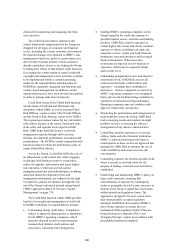 195
195 -
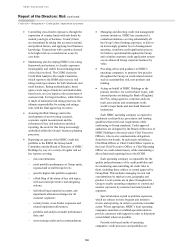 196
196 -
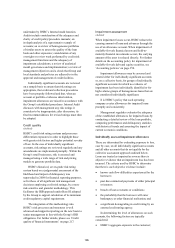 197
197 -
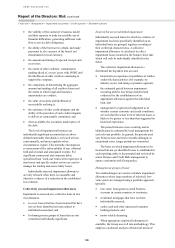 198
198 -
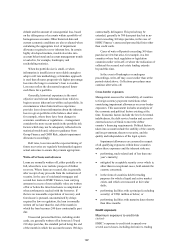 199
199 -
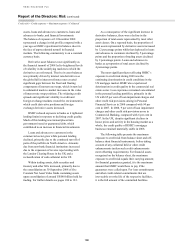 200
200 -
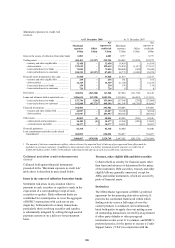 201
201 -
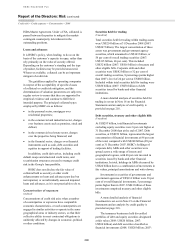 202
202 -
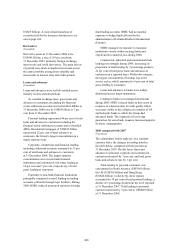 203
203 -
 204
204 -
 205
205 -
 206
206 -
 207
207 -
 208
208 -
 209
209 -
 210
210 -
 211
211 -
 212
212 -
 213
213 -
 214
214 -
 215
215 -
 216
216 -
 217
217 -
 218
218 -
 219
219 -
 220
220 -
 221
221 -
 222
222 -
 223
223 -
 224
224 -
 225
225 -
 226
226 -
 227
227 -
 228
228 -
 229
229 -
 230
230 -
 231
231 -
 232
232 -
 233
233 -
 234
234 -
 235
235 -
 236
236 -
 237
237 -
 238
238 -
 239
239 -
 240
240 -
 241
241 -
 242
242 -
 243
243 -
 244
244 -
 245
245 -
 246
246 -
 247
247 -
 248
248 -
 249
249 -
 250
250 -
 251
251 -
 252
252 -
 253
253 -
 254
254 -
 255
255 -
 256
256 -
 257
257 -
 258
258 -
 259
259 -
 260
260 -
 261
261 -
 262
262 -
 263
263 -
 264
264 -
 265
265 -
 266
266 -
 267
267 -
 268
268 -
 269
269 -
 270
270 -
 271
271 -
 272
272 -
 273
273 -
 274
274 -
 275
275 -
 276
276 -
 277
277 -
 278
278 -
 279
279 -
 280
280 -
 281
281 -
 282
282 -
 283
283 -
 284
284 -
 285
285 -
 286
286 -
 287
287 -
 288
288 -
 289
289 -
 290
290 -
 291
291 -
 292
292 -
 293
293 -
 294
294 -
 295
295 -
 296
296 -
 297
297 -
 298
298 -
 299
299 -
 300
300 -
 301
301 -
 302
302 -
 303
303 -
 304
304 -
 305
305 -
 306
306 -
 307
307 -
 308
308 -
 309
309 -
 310
310 -
 311
311 -
 312
312 -
 313
313 -
 314
314 -
 315
315 -
 316
316 -
 317
317 -
 318
318 -
 319
319 -
 320
320 -
 321
321 -
 322
322 -
 323
323 -
 324
324 -
 325
325 -
 326
326 -
 327
327 -
 328
328 -
 329
329 -
 330
330 -
 331
331 -
 332
332 -
 333
333 -
 334
334 -
 335
335 -
 336
336 -
 337
337 -
 338
338 -
 339
339 -
 340
340 -
 341
341 -
 342
342 -
 343
343 -
 344
344 -
 345
345 -
 346
346 -
 347
347 -
 348
348 -
 349
349 -
 350
350 -
 351
351 -
 352
352 -
 353
353 -
 354
354 -
 355
355 -
 356
356 -
 357
357 -
 358
358 -
 359
359 -
 360
360 -
 361
361 -
 362
362 -
 363
363 -
 364
364 -
 365
365 -
 366
366 -
 367
367 -
 368
368 -
 369
369 -
 370
370 -
 371
371 -
 372
372 -
 373
373 -
 374
374 -
 375
375 -
 376
376 -
 377
377 -
 378
378 -
 379
379 -
 380
380 -
 381
381 -
 382
382 -
 383
383 -
 384
384 -
 385
385 -
 386
386 -
 387
387 -
 388
388 -
 389
389 -
 390
390 -
 391
391 -
 392
392 -
 393
393 -
 394
394 -
 395
395 -
 396
396 -
 397
397 -
 398
398 -
 399
399 -
 400
400 -
 401
401 -
 402
402 -
 403
403 -
 404
404 -
 405
405 -
 406
406 -
 407
407 -
 408
408 -
 409
409 -
 410
410 -
 411
411 -
 412
412 -
 413
413 -
 414
414 -
 415
415 -
 416
416 -
 417
417 -
 418
418 -
 419
419 -
 420
420 -
 421
421 -
 422
422 -
 423
423 -
 424
424 -
 425
425 -
 426
426 -
 427
427 -
 428
428 -
 429
429 -
 430
430 -
 431
431 -
 432
432 -
 433
433 -
 434
434 -
 435
435 -
 436
436 -
 437
437 -
 438
438 -
 439
439 -
 440
440 -
 441
441 -
 442
442 -
 443
443 -
 444
444 -
 445
445 -
 446
446 -
 447
447 -
 448
448 -
 449
449 -
 450
450 -
 451
451 -
 452
452 -
 453
453 -
 454
454 -
 455
455 -
 456
456 -
 457
457 -
 458
458 -
 459
459 -
 460
460 -
 461
461 -
 462
462 -
 463
463 -
 464
464 -
 465
465 -
 466
466 -
 467
467 -
 468
468 -
 469
469 -
 470
470 -
 471
471 -
 472
472
 |
 |

191
final rule regarding Risk-Based Capital Standards:
Advanced Capital Adequacy Framework – Basel II.
This final rule represents the US adoption of the
Basel II International Capital Accord (‘Basel II’).
The final rule became effective on 1 April 2008, and
requires large bank holding companies, including
HNAH, to adopt its provisions no later than 1 April
2011. HNAH has established comprehensive Basel
II implementation project teams comprised of risk
management specialists representing all risk
disciplines. In addition, US banking authorities have
adopted ‘leverage’ capital requirements that
generally require US banks and bank holding
companies to maintain a minimum amount of capital
in relation to their balance sheet assets (measured on
a non-risk-weighted basis).
HBUS and HTCD are subject to risk-based
assessments from the FDIC, which insures deposits
generally to a maximum of US$100,000 per
domestic depositor. In October 2008, the FDIC
raised the maximum amount of insured deposits
to US$250,000 per domestic depositor until
31 December 2009, after which the limit will return
to US$100,000. The FDIC bases assessments on
supervisory ratings, financial ratios and long-term
debt issuer ratings, with those banks in the highest
rated categories paying lower assessments.
In October 2008, the FDIC announced its
Temporary Liquidity Guarantee Programme
(‘TLGP’), under which the FDIC will guarantee
(i) newly-issued senior unsecured debt issued by
eligible, participating institutions, and (ii) certain
non-interest bearing transaction accounts. HNAH
and its subsidiary banks and bank holding companies
elected to participate in both components of the
TLGP, as applicable.
HSBC’s US consumer finance operations are
subject to extensive state-by-state regulation in the
US, and to laws relating to consumer protection
(both in general, and in respect of sub-prime lending
operations, which have been subject to enhanced
regulatory scrutiny); discrimination in extending
credit; use of credit reports; privacy matters;
disclosure of credit terms; and correction of billing
errors. They also are subject to regulations and
legislation that limit operations in certain
jurisdictions.
Risk management
(Unaudited)
Introduction
All HSBC’s activities involve, to varying degrees,
the analysis, evaluation, acceptance and management
of risks or combinations of risks. The most important
categories of risk that the Group is exposed to are
credit risk (including cross-border country risk),
market risk, operational risks in various forms,
liquidity risk, insurance risk, pension risk, residual
value risk, reputational risk and sustainability
(environmental and social) risks. Market risk
includes foreign exchange, interest rate and equity
price risks.
The management of these various risk
categories is discussed below. Insurance risk is
managed by the Group’s insurance businesses
together with their own credit, liquidity and market
risk functions, distinct from those covering the rest
of HSBC due to the different nature of their
activities. They remain under risk oversight at Group
level.
The risk profiles of HSBC Group and of
individual operating entities change constantly under
the influence of a wide range of factors. The risk
management framework established by the Group
fosters the continuous monitoring of the risk
environment and an integrated evaluation of risks
and their interdependencies.
Risk governance and ownership
A well-established risk governance and ownership
structure ensures oversight of, and accountability for,
the effective management of risk at Group, regional,
customer group and operating entity levels.
The Board approves the Group’s risk appetite
framework, plans and performance targets for the
Group and its principal operating subsidiaries, the
appointment of senior officers, the delegation of
authorities for credit and other risks and the
establishment of effective control procedures. Under
authority delegated by the Board, the Group
Management Board (‘GMB’) through its separately
convened Risk Management Meeting (‘RMM’)
formulates high-level Group risk management policy,
exercises delegated risk authorities and oversees the
implementation of risk appetite and controls. It
monitors all categories of risk, receives reports on
actual performance and emerging issues, determines
action to be taken and reviews the efficacy of HSBC’s
risk management framework.
Primary responsibility for managing risk at
operating entity level lies with the respective boards
and Chief Executive Officers, as custodians of their
balance sheets. In their oversight and stewardship of
risk management at Group level, GMB and RMM are
supported by a dedicated Global Risk function headed
by the Group Chief Risk Officer (‘GCRO’), who is a
member of both bodies and reports to the Group
Finance Director within the integrated Finance and
